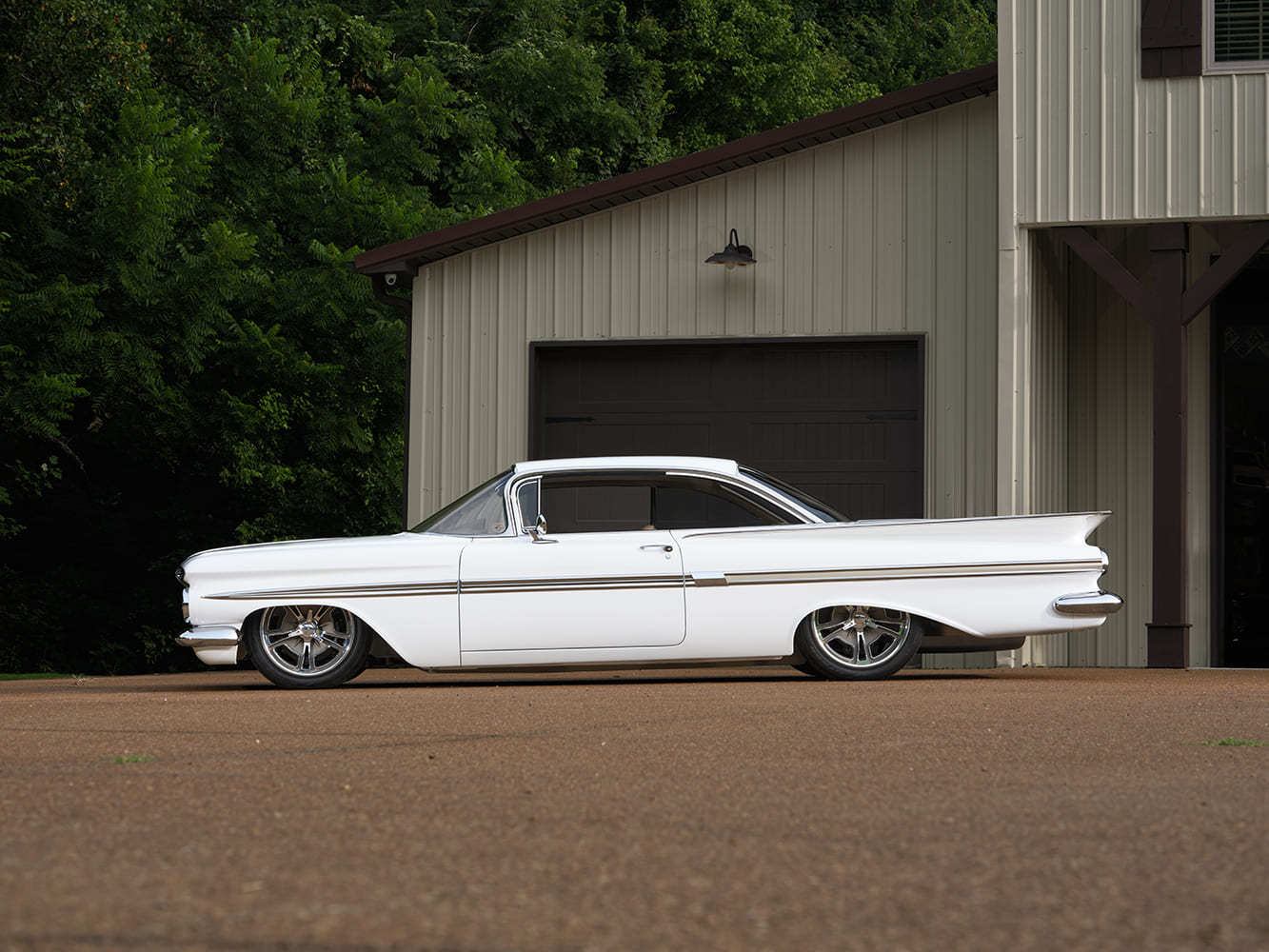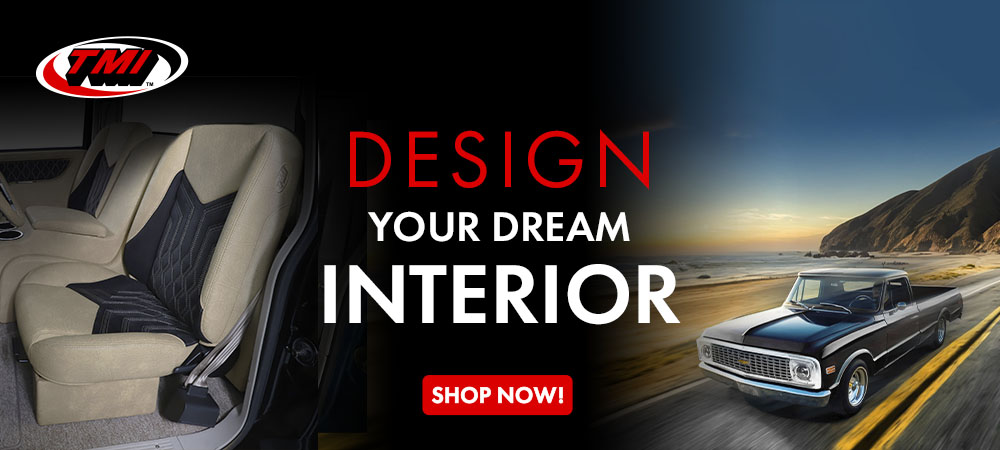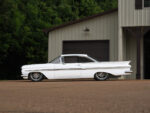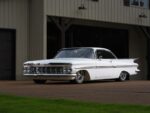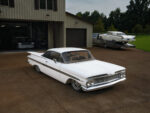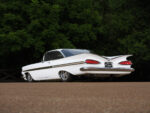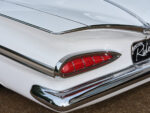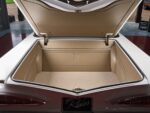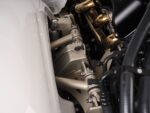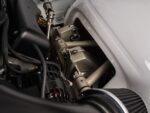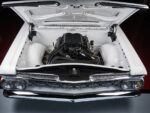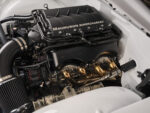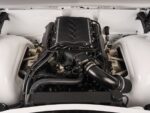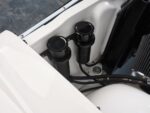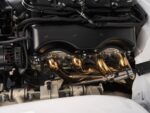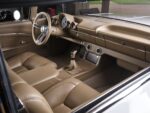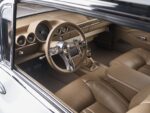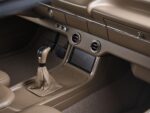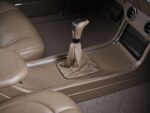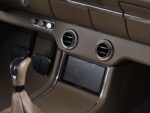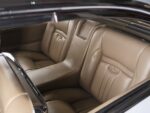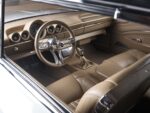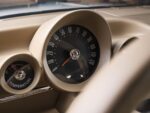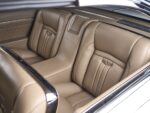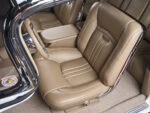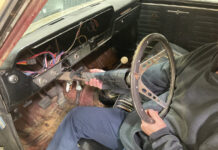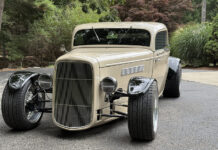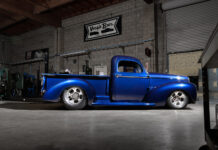By Brian Brennan – Photography By NotStock Photography
We all want to unearth our next project tucked away in a museum just waiting for us to bring it back into the open and start fresh. Even though Bill Hill from Jackson, Tennessee, didn’t purchase this 1959 Chevy Impala directly from the Chevyland USA Museum in Nebraska, where it was from 1973 until 2018, it originated from that collection. The museum was previously owned by Monte Hollertz, a local farmer with a deep passion for his cars.
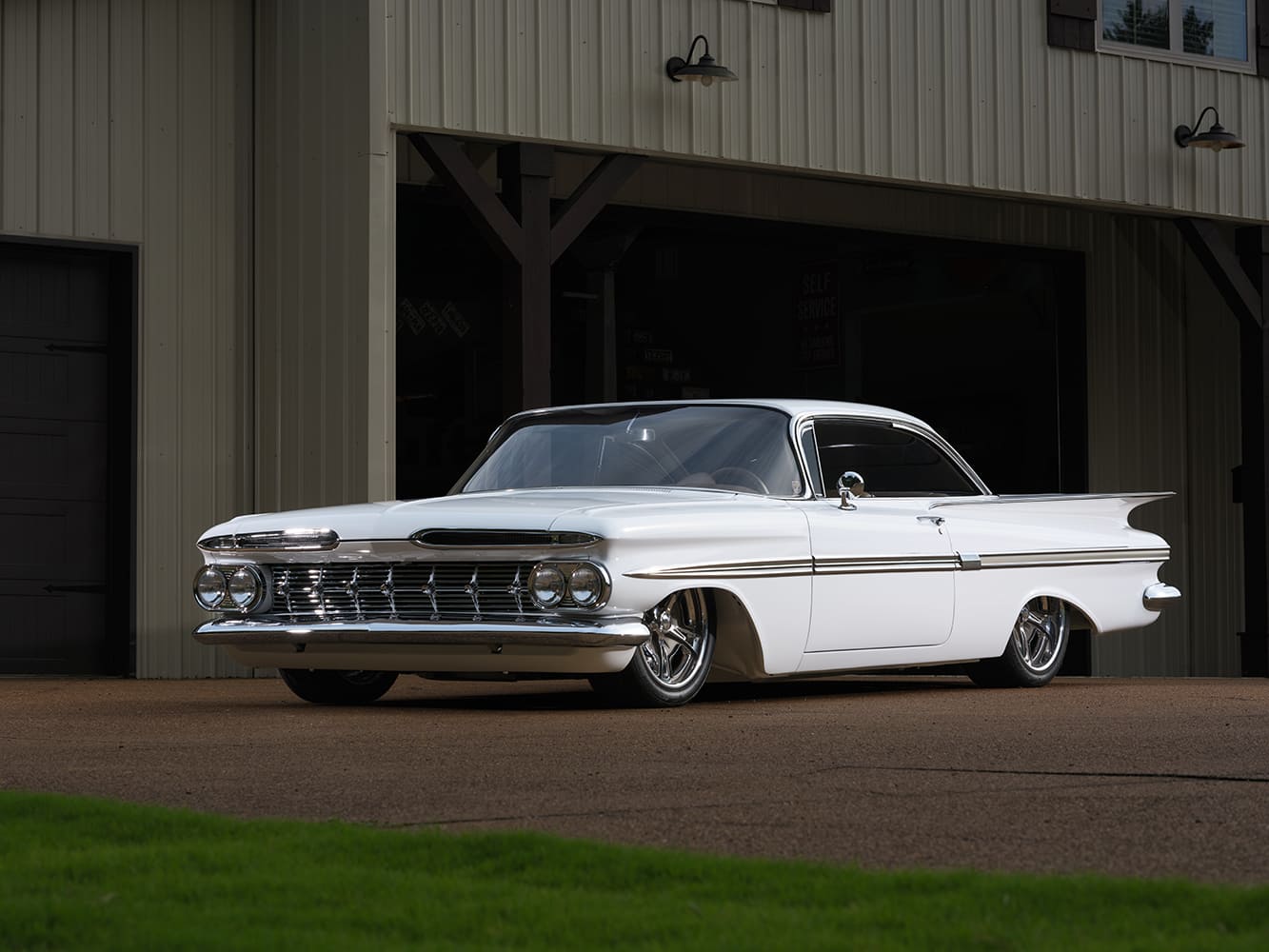
According to the story, the car was given to Hollertz’s daughter, who later decided to sell it. Although the immaculate machine was ready to hit the road, it wasn’t suited for the demands of hot rodding. That’s where Riveting Rides Hot Rod Shop, under the careful direction of Madison Alexander, comes into play. Bill is a longtime rodder who has owned a variety of hot rods over the years, but deep down he has always desired the “baddest” looking and performing 1959 Chevy Impala on the road. He may have it with his latest ride.
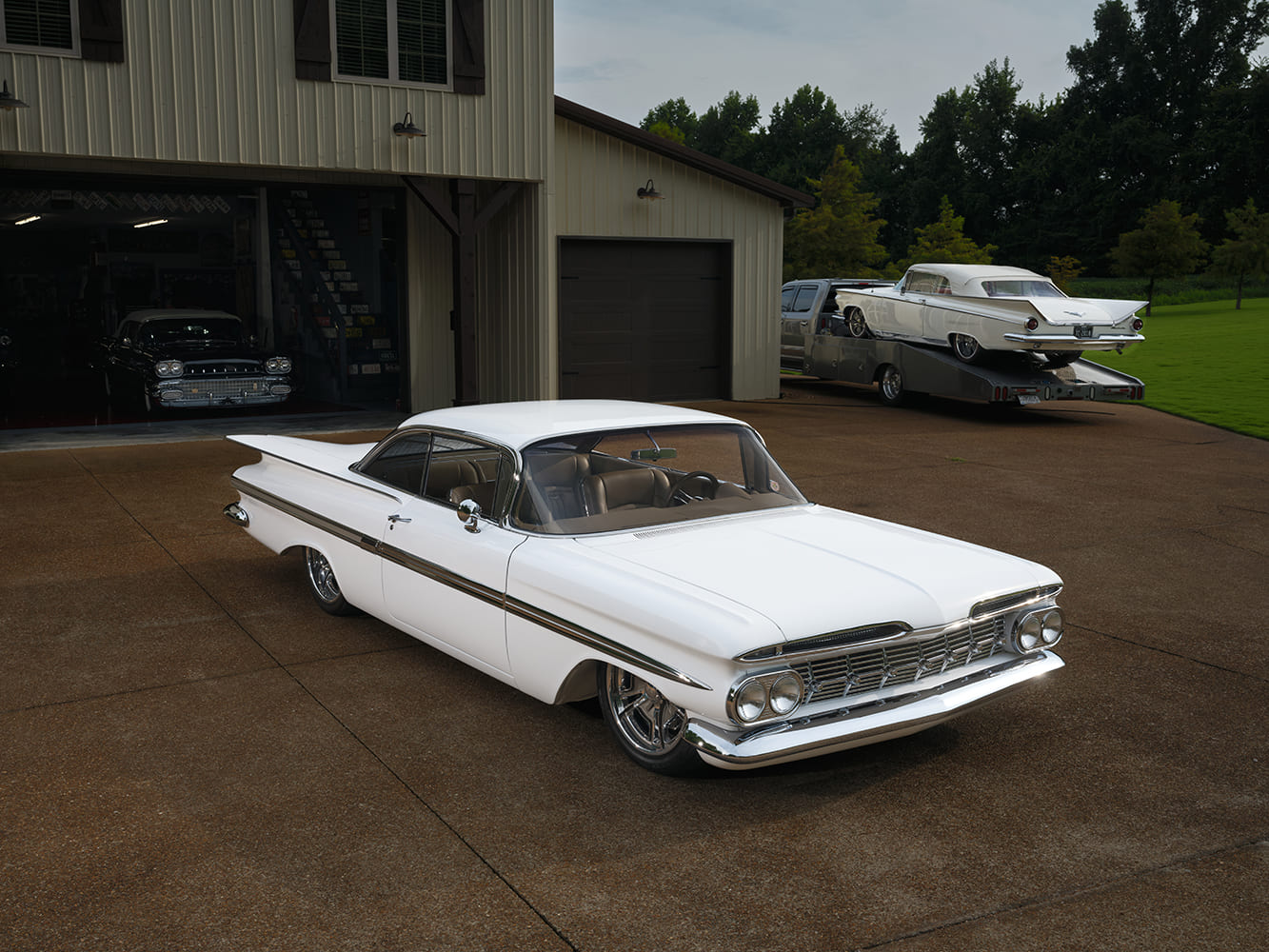
Since 1959, the Impala has been one of our hobby’s iconic vehicles. How about a bit of history and background? In response to changing consumer demands and economic pressures, General Motors boldly redesigned one of its flagship models: the 1959 Chevrolet Impala. This redesign was part of a broader strategy to streamline production by sharing bodyshells with its more economical brands, including Buicks, Oldsmobiles, and Pontiacs. The result was a stunning automobile that captured the spirit of an era marked by change and innovation.
![]()
The 1959 Impala debuted with a striking profile. Its new X-frame chassis rested beneath a body featuring a roofline that was 3 inches lower than that of the Tri-Five–era cars. This design created a silhouette that implied speed and elegance. The body was widened by 2 inches and the wheelbase was extended by 1-1/2 inches, providing more interior space and a larger, smoother ride.
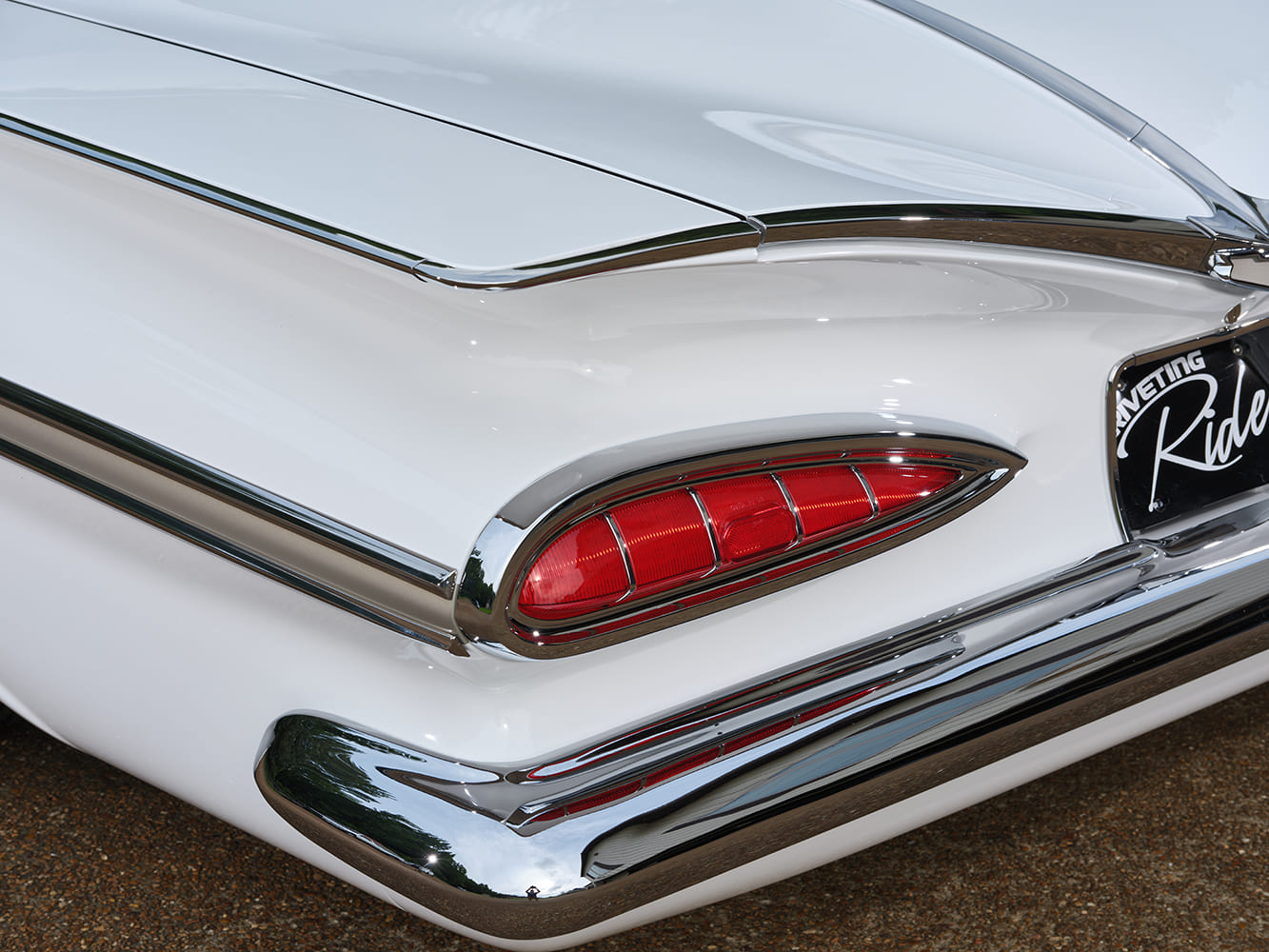
One of the remarkable design features of the 1959 Chevrolet Impala is its striking tail. The flattened, horizontally oriented tailfins create an unforgettable batwing effect that became a defining characteristic of the model, encapsulating the essence of American automotive design during the Space Age. Complementing the batwing tail are large, teardrop-shaped taillights that illuminate the night. These design elements have captivated the hearts of hot rodders for decades, and from what we can see, they continue to do so.
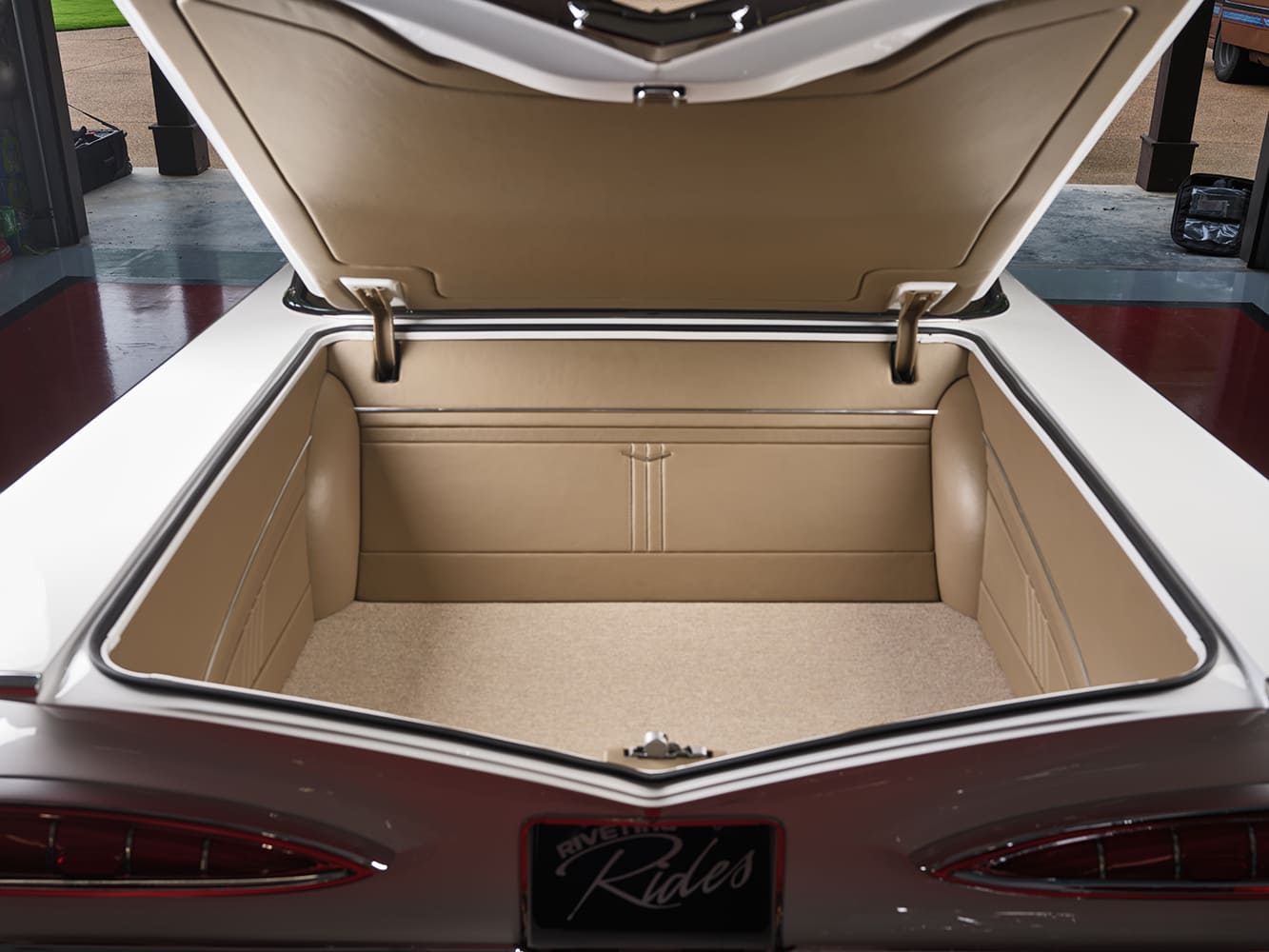
However, true to form, a hot rod should always reflect the owner’s preferences and style. In this case, Bill arranged for Alexander to remove the side trim, badging, hood insignia, and trim from the top of the fender. The front bumper appears without its Dagmar bumper guards (often referred to as bullet bumpers), which gained popularity in American cars after World War II. The center of the bumper was also filled and smoothed. All the appropriate bodywork and subsequent paint were completed at Riveting Rides using BASF two-stage basecoat/clearcoat in bright white.
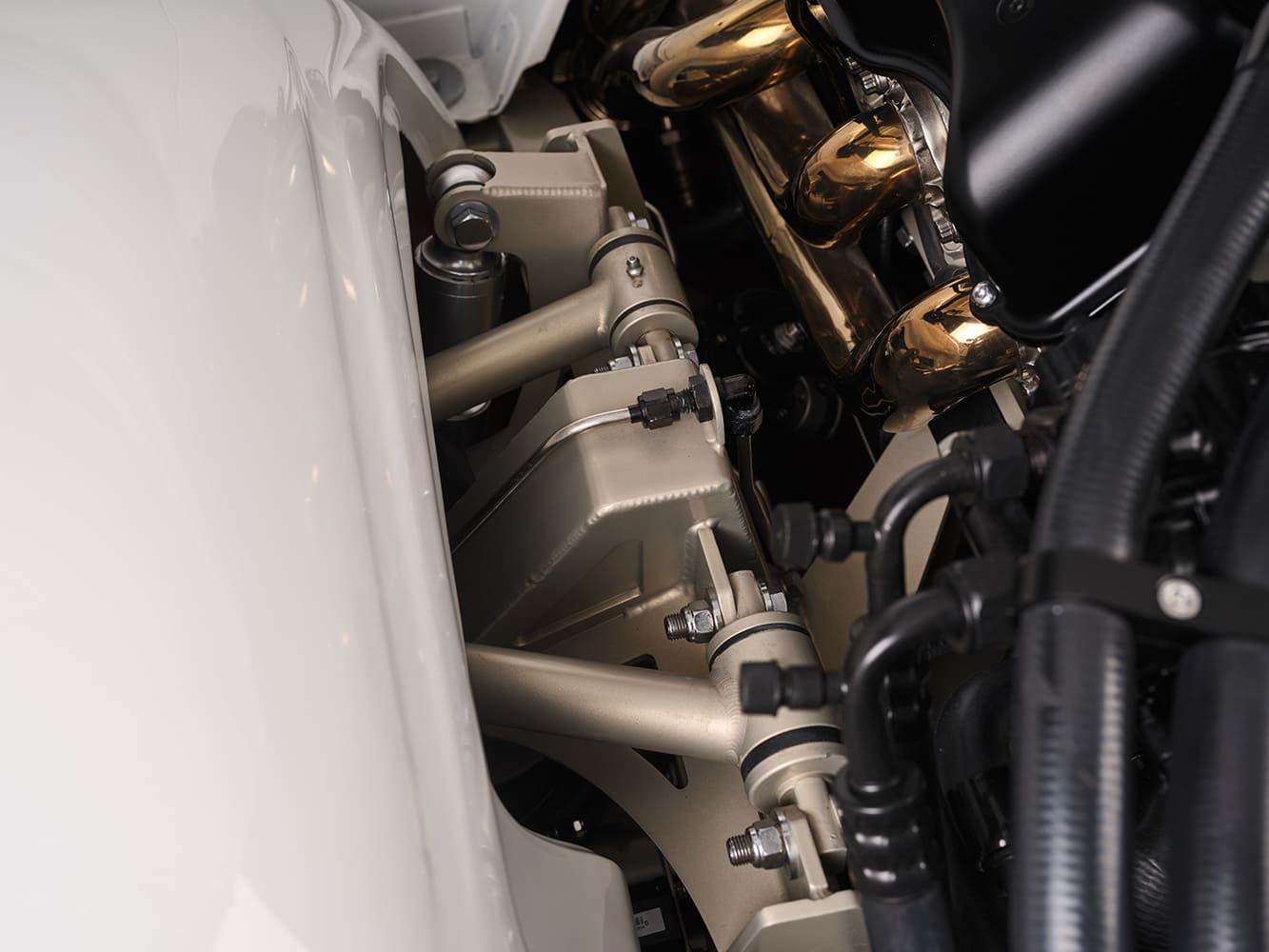
Inside, the Impala prioritized comfort and style. The contoured instrument panel showcased deep-set gauges that offered essential information at a glance. However, this was how it arrived from the factory. Once at Riveting Rides, the factory dash was smoothed and modified. It was then equipped with Dakota Digital RTX gauges, while a Flaming River steering column paired with a Sparc Industries leather-wrapped three-spoke wheel was added to the lower section of the dashboard. Air conditioning controls and air vents for the Vintage Air system were also affixed to the custom lower panel. A digital touch screen for the stereo and GPS was installed in the custom center console. Simultaneously, the management system for the Air Lift setup was incorporated with Roadster Shop–supplied airbags, with hidden controls resting in the factory ashtray. All necessary wiring was managed by a Ron Francis Wiring system installed at Riveting Rides.
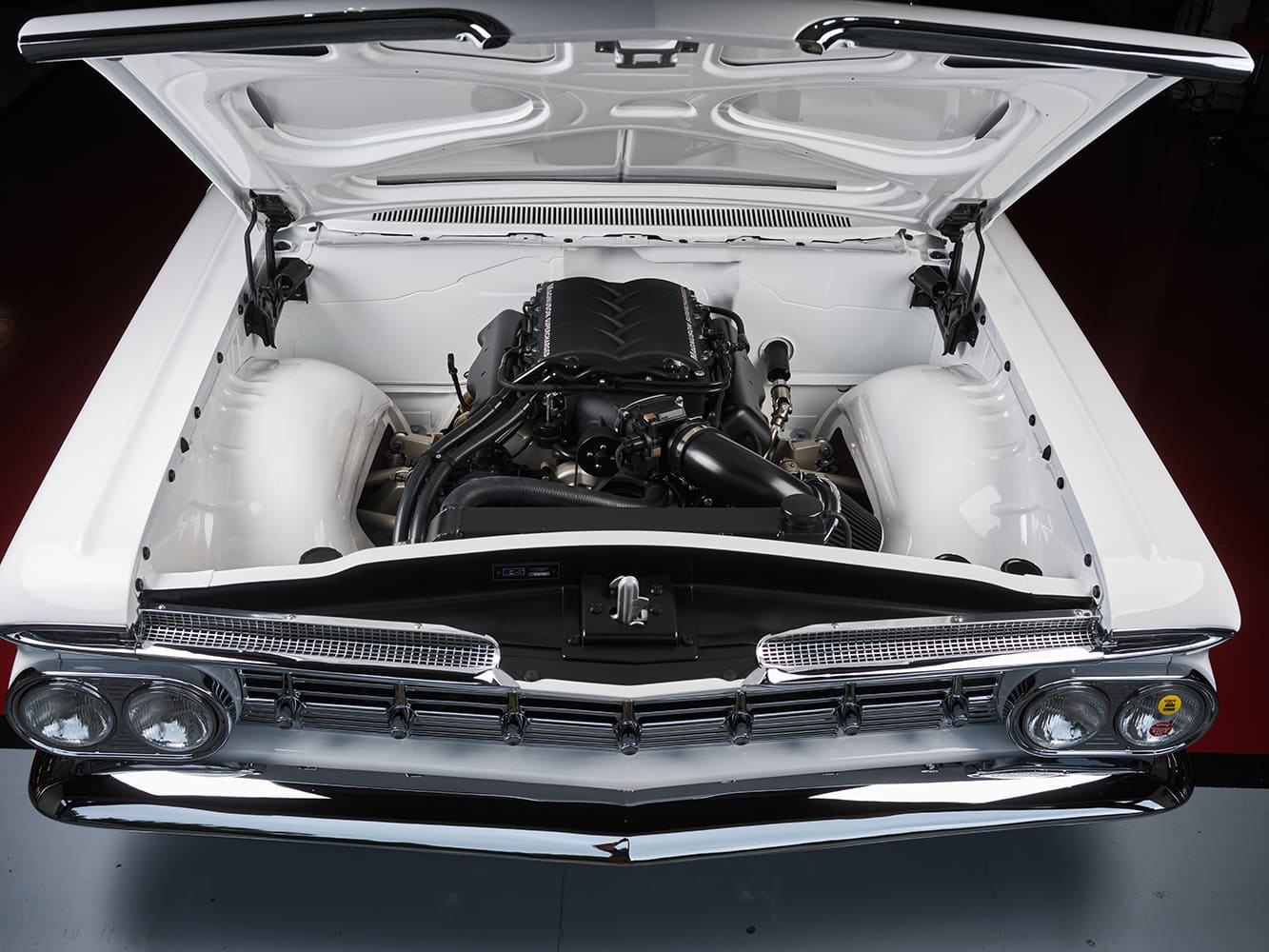
The Safari-colored light brown leather adorned the interior, meticulously stitched by Paul Atkins of Paul Atkins Custom Auto Interiors. The front bucket seats are from a 1962 Chevy Impala SS, while the rear buckets are custom made. The same leather was utilized for the headliner, door, kick panels, and a full custom trunk, and the carpeting is a Sahara sand color.
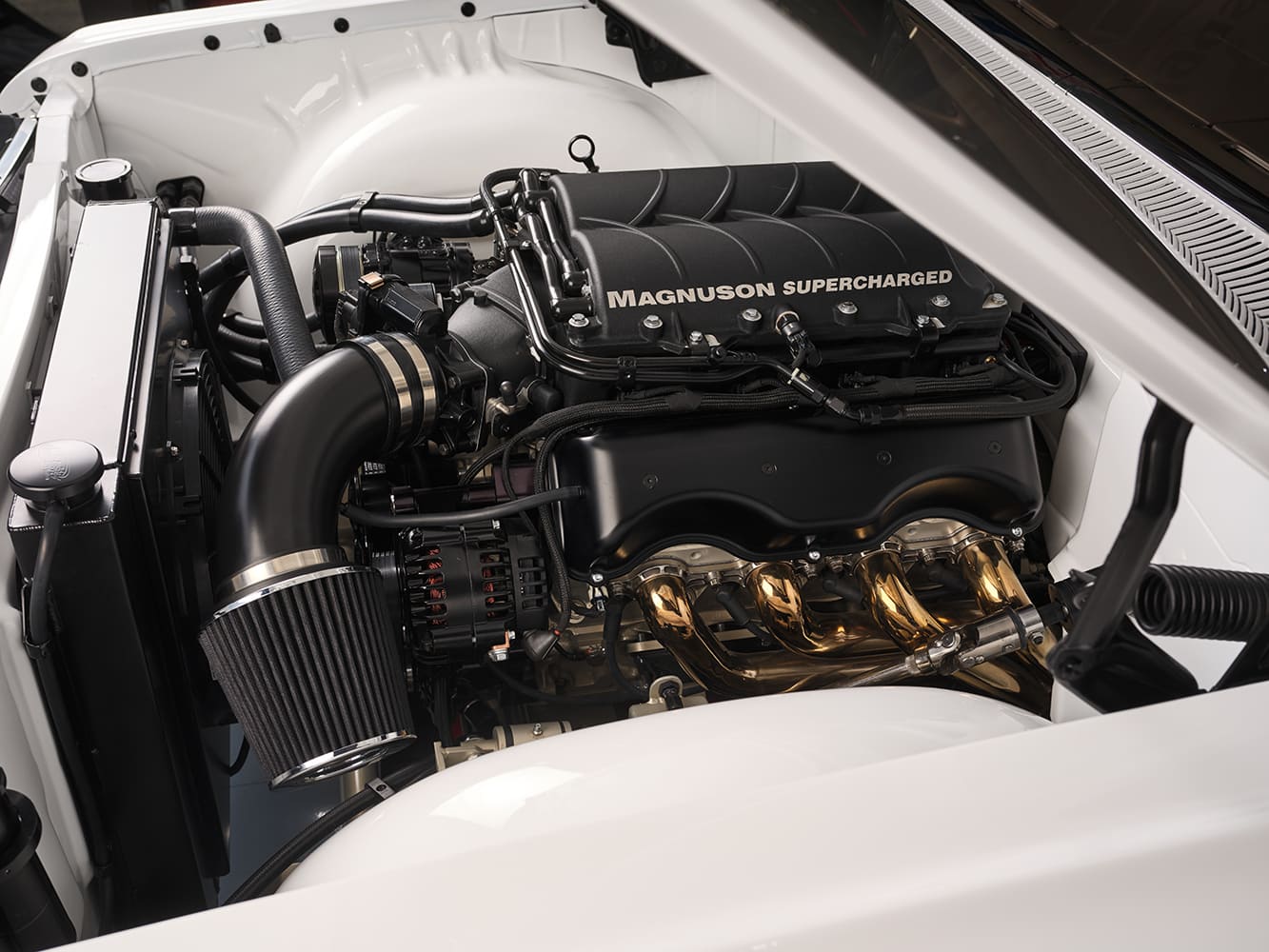
In the world of hot rods, the 1958-64 Chevrolet X-frame models have carved out a niche that resonates powerfully. However, beneath the surface glamour lies a challenge. While these classics boast undeniable charm, their original chassis and handling capabilities often fall short of modern driving expectations. For many, the quest for performance and ride comfort begins with a transformation, and it’s here that Bill chose to swap in a new, state-of-the-art Roadster Shop Fast Track chassis, replacing the old one.
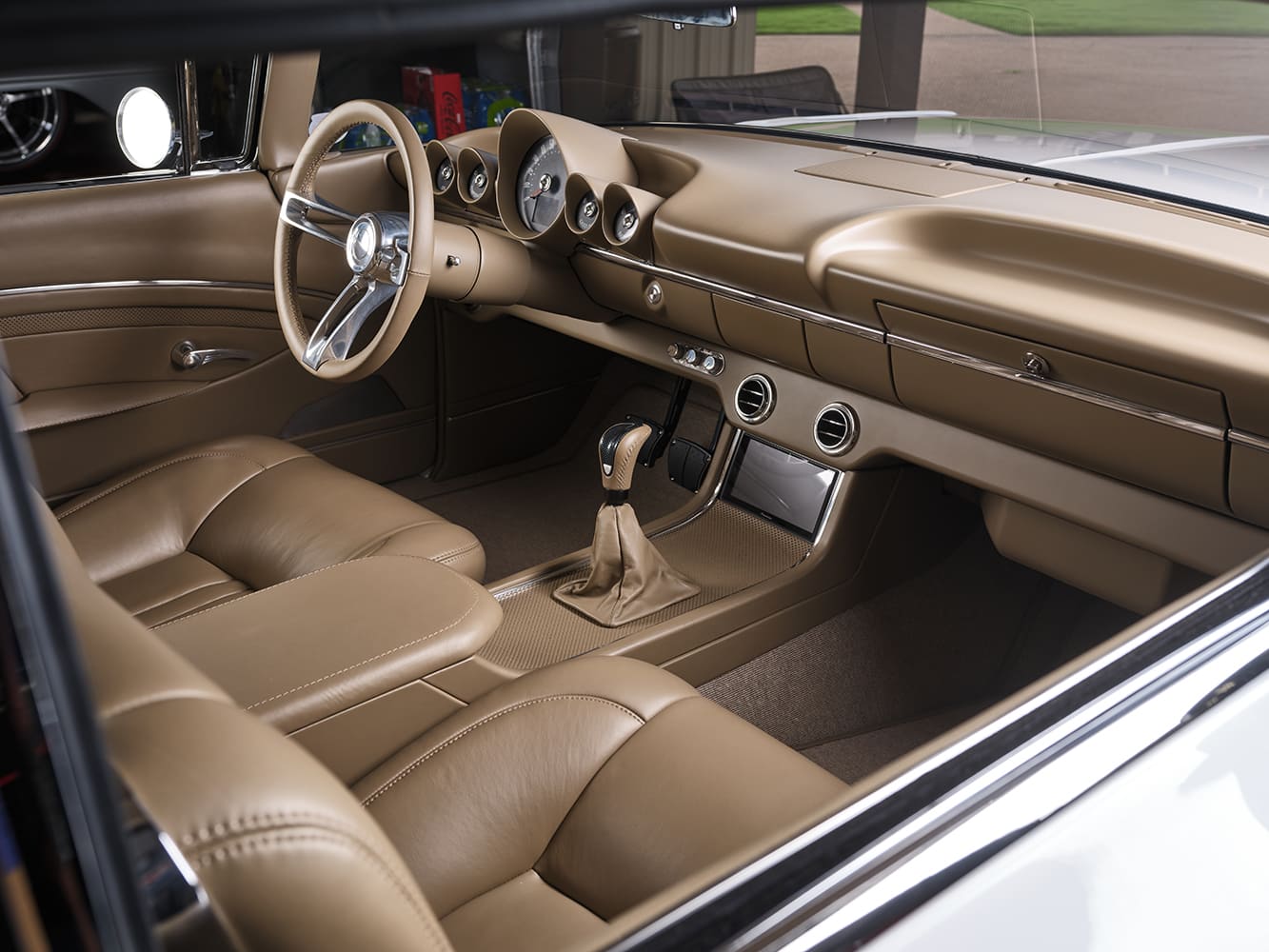
The Fast Track chassis is crafted to blend vintage aesthetics with modern performance seamlessly. To fully unleash the potential of this 1959 Impala, the Fast Track Impala chassis embarks on this journey with its hand-fabricated, 10-gauge, fully boxed perimeter framerails. This new chassis preserves the factory body mounts and the original bumper and core support brackets, ensuring that Riveting Rides can maintain the classic appearance. The Roadster Shop Fast Track front suspension features a track width of 58.75 inches and a Roadster Shop power rack-and-pinion setup. You will discover a C7 Corvette spindle and hub assembly paired with Viking adjustable coilover shocks.
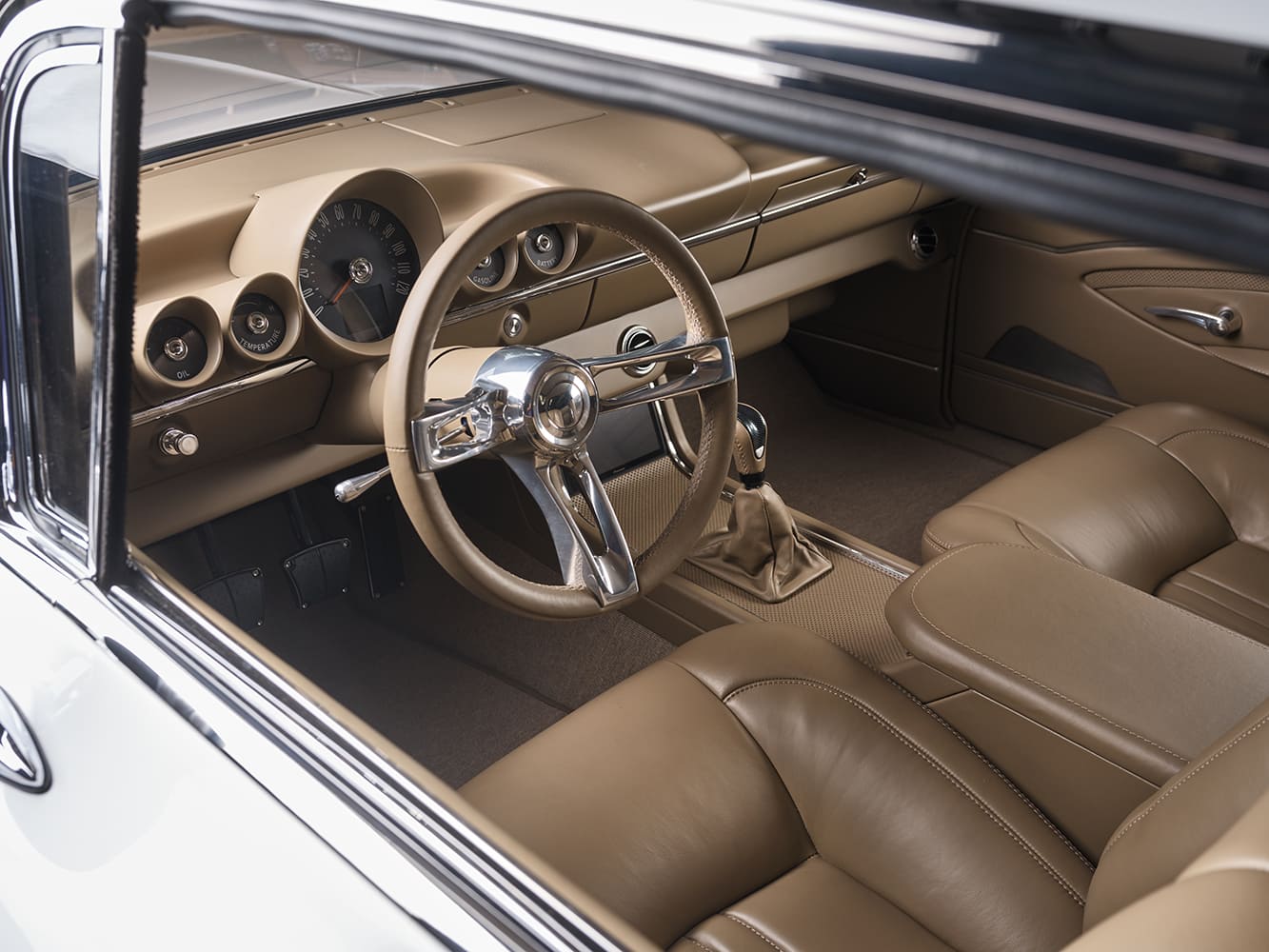
This hub assembly is enhanced by Wilwood 14-inch drilled-and-slotted rotors with six-piston calipers in the front and 13-inch drilled-and-slotted rotors with six-piston calipers in the rear. The braking responsibilities are managed by a Wilwood dual-reservoir master cylinder, which is neatly concealed beneath the dash and placed directly behind the speedometer. Continuing with handling, a 1.25-inch splined front sway bar with C6 Corvette endlinks reduces body roll, enabling aggressive handling. At the rear, the Strange Engineering Ford 9-inch housing, 3.55 gears, and stainless steel 31-spline axles are ready to manage the power. At the corners, Schott Cobra wheels with 19s in the front and 20s in the back are now wrapped in Nitto rubber, measuring 245/45R19 and 275/40R20.
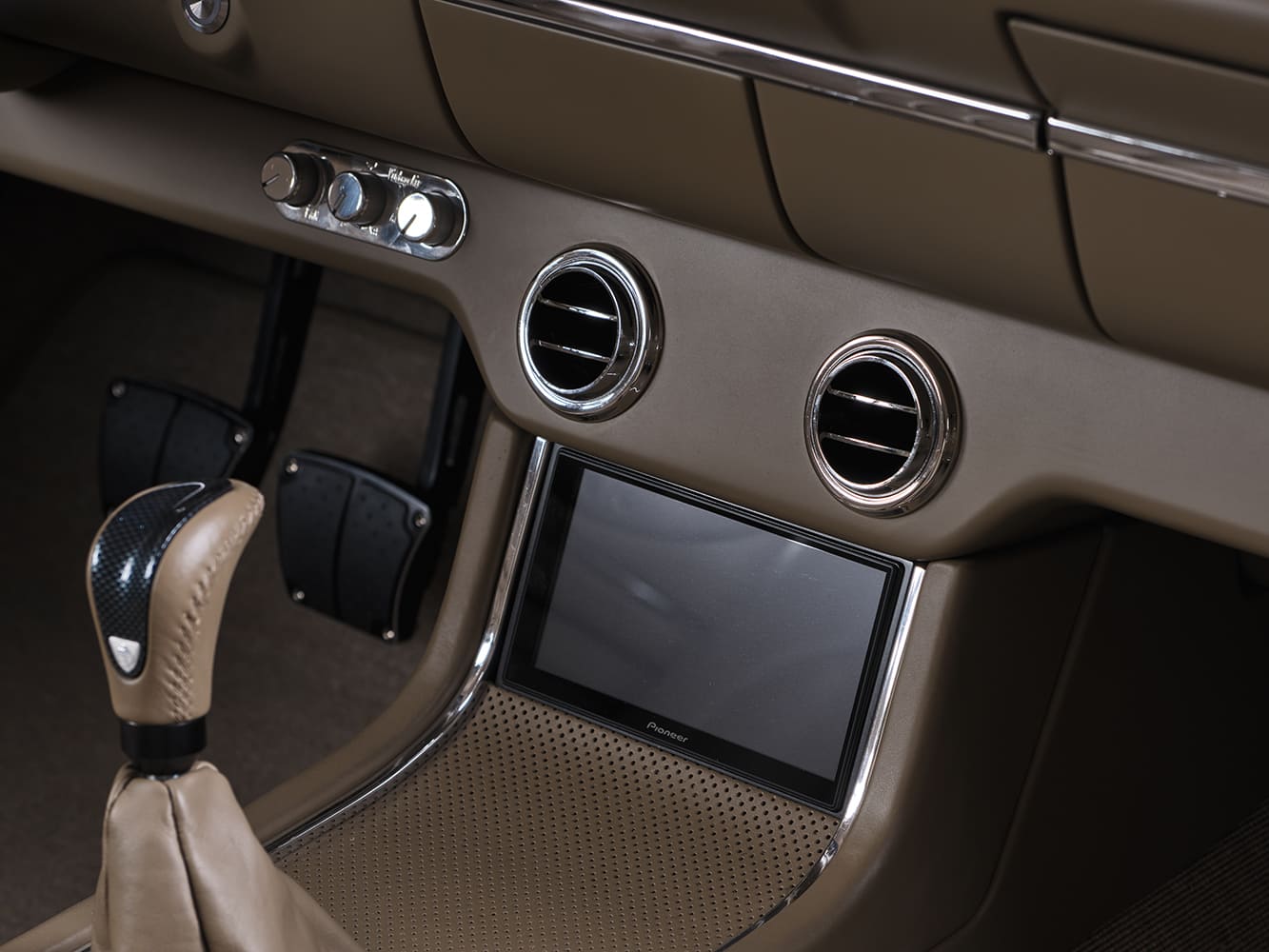
Nestled within the Roadster Shop chassis is a supercharged LSA 6.2L V-8 engine. This LSA engine features a cast-aluminum block supported by six cross-bolted main caps and is topped with cast-aluminum rectangular port cylinder heads. The intake and exhaust valves measure 2.16 inches and 1.59 inches in diameter, respectively. Though its valve covers evoke the 409, this LSA block showcases 409-inspired LS Classics valve covers by Lokar. Internally, the engine boasts a balanced forged steel crankshaft, while the connecting rods are crafted from powdered metal and the pistons consist of hypereutectic aluminum. It’s important to note that Riveting Rides removed the factory blower, replacing it with a Magnuson 2.3L Heartbeat supercharger.
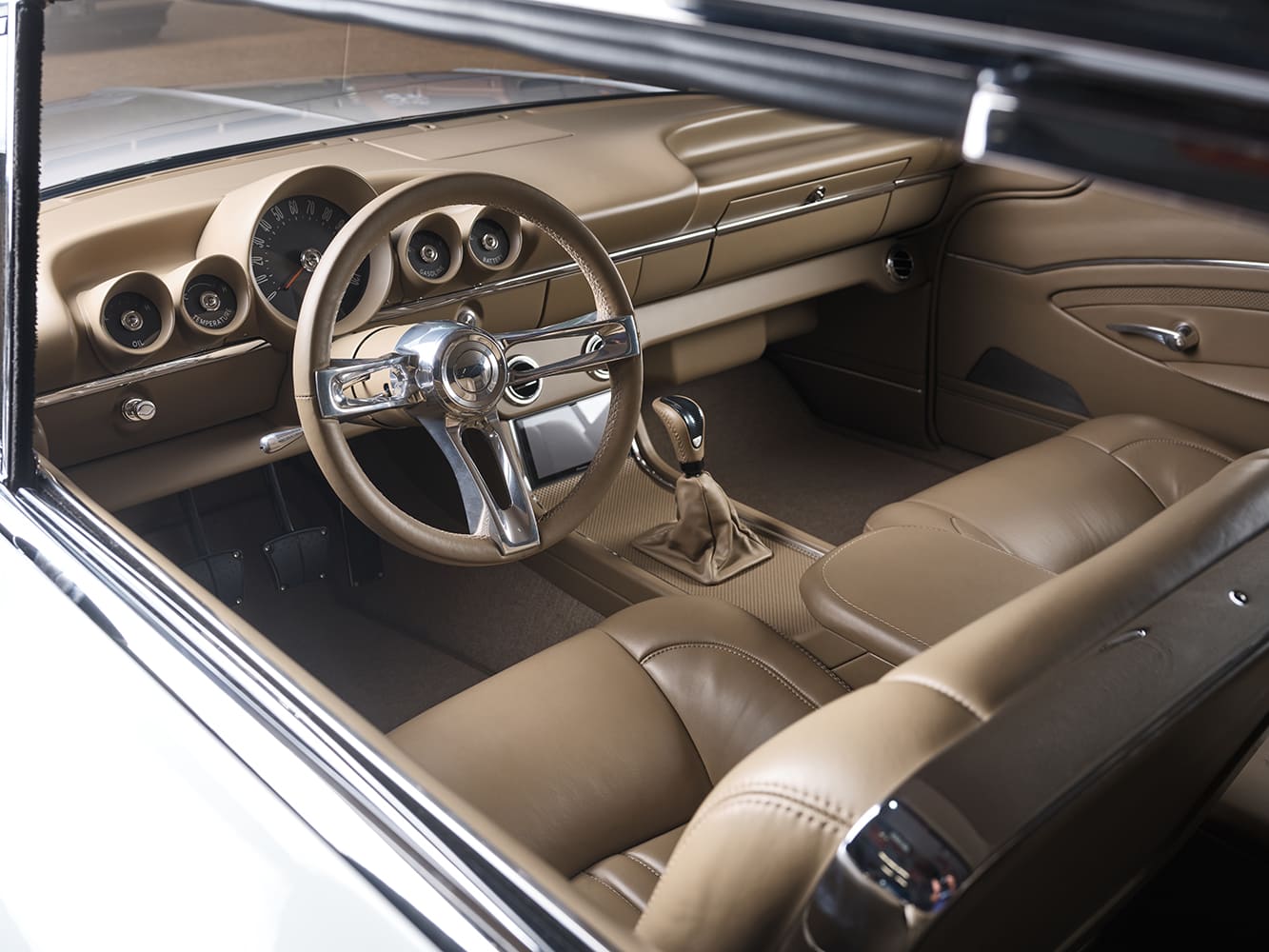
A Holley Terminator X Max provides the “brains.” At the same time, a set of Ultimate stainless headers is employed, followed by a custom polished stainless steel exhaust system that terminates in a pair of Flowmaster FlowFX mufflers. The frame’s robust structural crossmember accommodates 3-inch exhaust ports, ensuring that performance emphasizes more than just speed; it’s also about sound. An Optima battery, now relocated to the trunk, ignites the fuel load. Keeping the V-8 cool and calm is a Performance Rod and Custom radiator with SPAL electric fans.
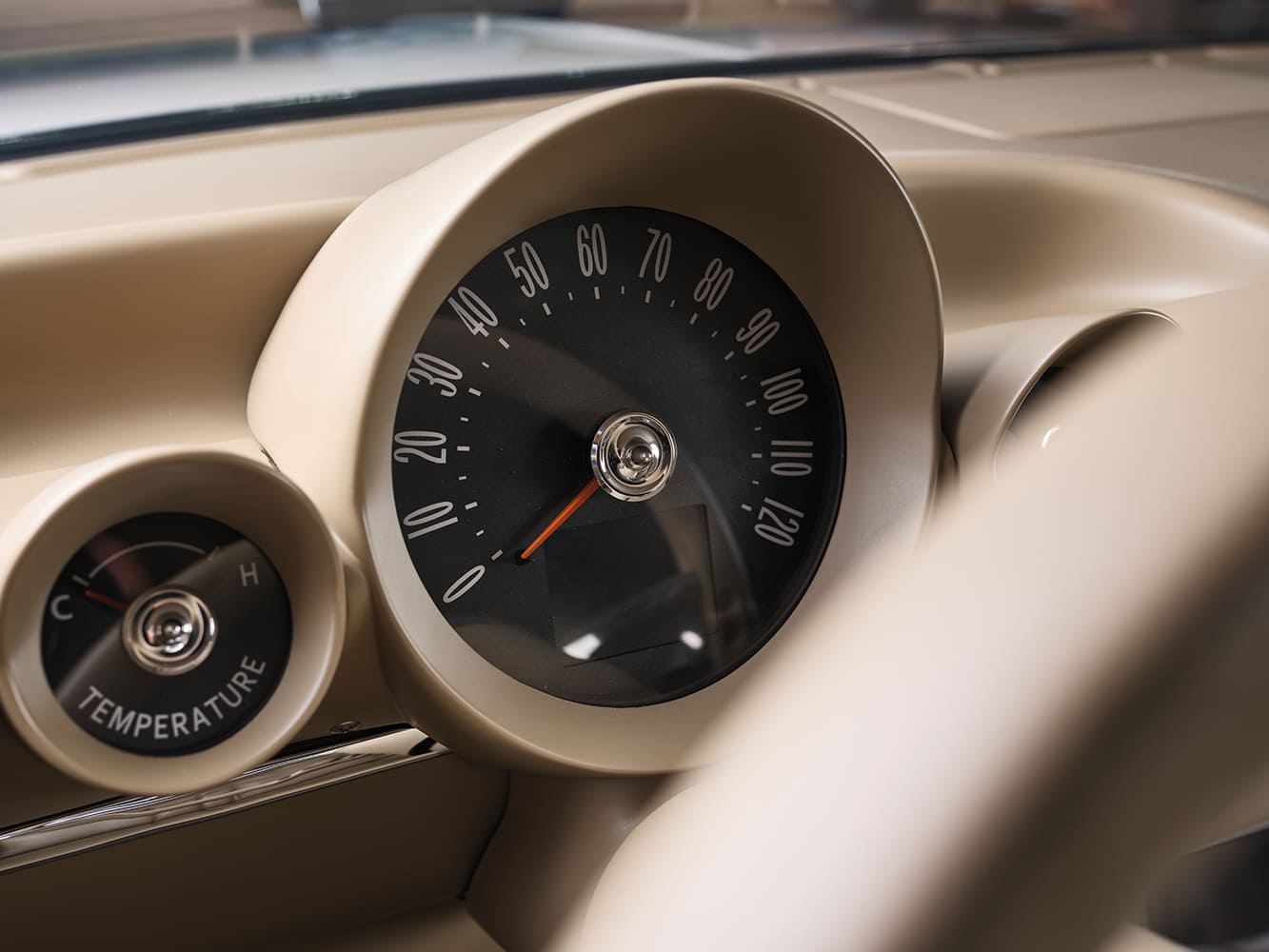
The air cleaner tube is something from the bench at Riveting Rides. Moreover, this isn’t just any Lingenfelter-modified LSA V-8; it’s outfitted with an LS9 camshaft designed for a Seven Marine motor. Yes, a boat motor—and not just any, but a Seven Marine 627 reliably delivers an impressive 627 hp all day. (For an intriguing read, check out Seven Marine. They arguably produced the most potent outboard V-8 motors. Unfortunately, their production has ceased, but “oh my,” how impressive were they while they lasted.)
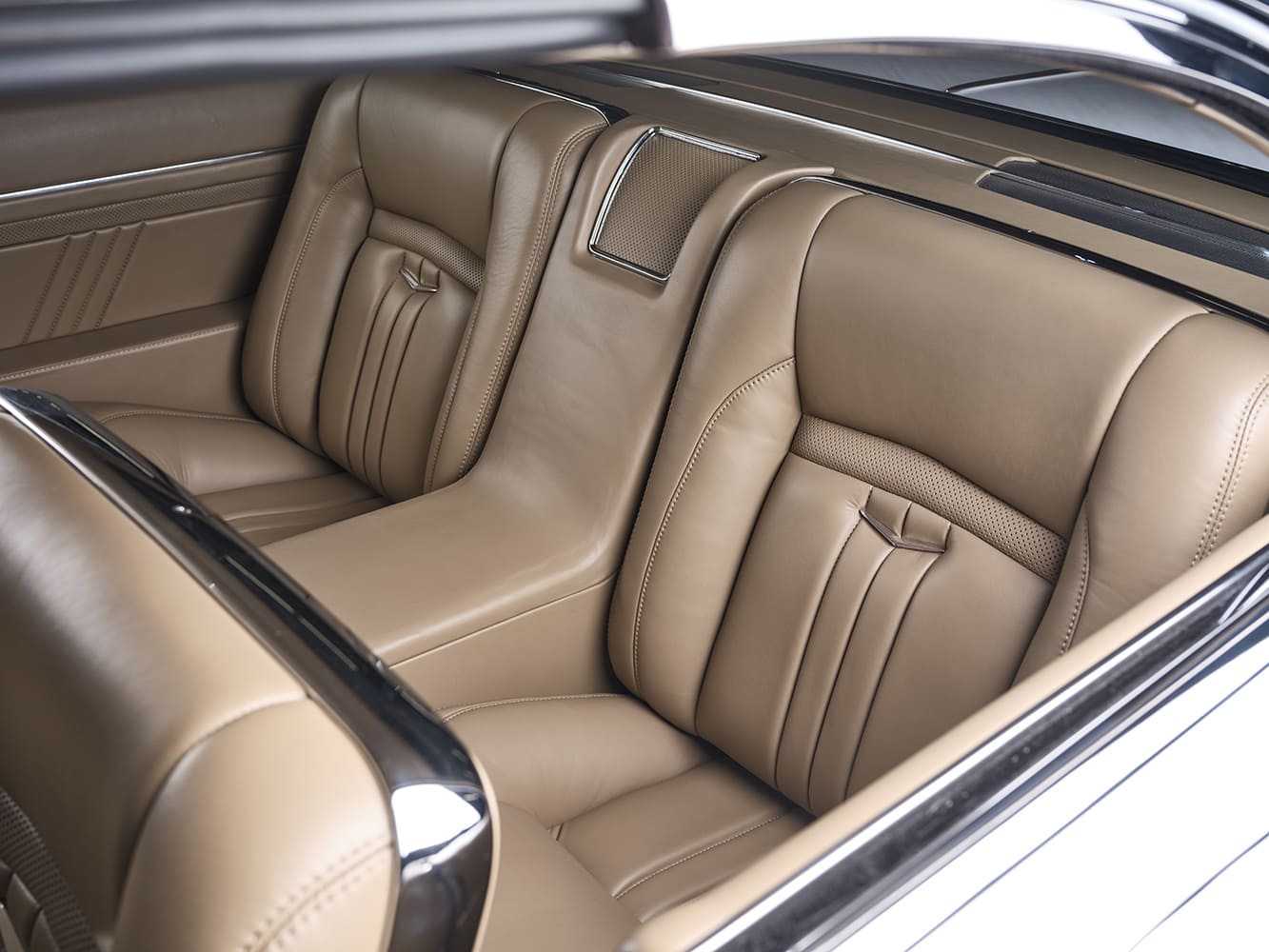
Building a hot rod is about balancing personal preferences and the appropriate materials for that sheetmetal. We believe that Bill and Alexander of Riveting Rides Hot Rod Shop have skillfully navigated the path to creating an impressive 1959 Chevy Impala. Undoubtedly, it displays an exceptional appearance and offers plenty of power. MR
Check out this story in our digital edition here.











